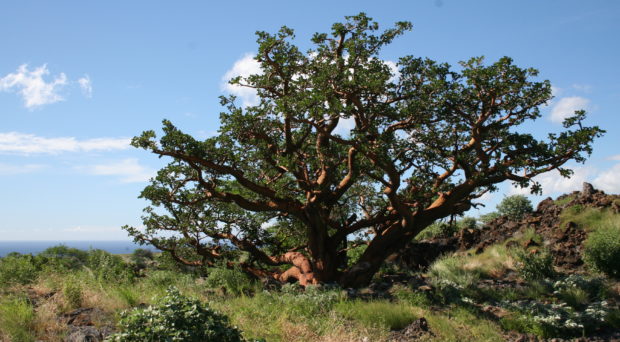
Did you know that approximately 9500 species of trees could potentially disappear in the near future? And the estimation is more realistically between 12000 and 20000 (of the 60000 of tree species described so far)! Tree biodiversity (or genetic diversity of trees) is essential because it ensures that trees can adapt to different environments and deal with changes and environmental stress, so the conservation of such diversity is vital.

Approximately 9500 species of trees could potentially disappear in the near future.
To share the latest information and discuss strategies for collaboration to conserve the genetic diversity of tree species, 120 scientists and conservation managers from different countries met in Chicago last spring. Kevin Potter (professor at North Carolina State University) is one of the authors of the introduction paper to the special issue dedicated to the Chicago meeting “Gene Conservation of Tree Species – Banking on the Future” (*), so we asked him to tell us about genetic diversity of trees and the meeting’s purposes and conclusions.
Why conservation matters?
Unlike animals, plants cannot move so they need to manage threats in a different way than running away; genetic diversity is the key to the ability of plants to adapt to changing conditions. Trees in particular, among the longest-living organisms on the planet, show in fact higher genetic variation within a single population than other kinds of plants.
Considering that we are facing a particularly tough time (we have entered an era of mass extinction in which the current extinction rate is at least three orders of magnitude -100 times- higher than Earth’s average across biological and geological history ) it is “imperative to effectively and efficiently conserve the world’s forest genetic resources”, Kevin says.
It is “imperative to effectively and efficiently conserve the world’s forest genetic resources”, Kevin says.
Trees can be conserved in their natural habitat (this is called in situ conservation, from Latin “at the place”) or somewhere else, where they would not necessarily grow (ex situ conservation, “outside the place”). National parks on one side and botanic gardens on the other are two main examples of these conservation approaches (Kew Gardens’ Millennium Seed Bank near London, UK, stores more than 2 billion seeds from ca. 37,400 plant species).
Some outcomes from the meeting

Still basic information about many tree species is greatly lacking, which is a major limitation to meet the global conservation targets set by the Global Strategy for Plant Conservation in 2002, in association with the international Convention for Biological Diversity. To achieve these targets, partnerships are essential. An evaluation of whether existing in situ reserves adequately protect species was also one of the subjects of the meeting, as well as the need to address key knowledge gaps about successful ex situ conservation methods and how to restore them in natural habitats (in fact a better coordination between ex situ and in situ was recommended). Most of the world’s tree genetic conservation efforts, have focused on temperate and boreal tree species, so great efforts are required for tropical and semi-tropical tree species, which show even higher diversity!
Another major challenge to the success of achieving the targets set by the GSPC is obviously the political choices of governments. The existential value of tree species is a hard sell (and Kevin ironically remarks “trees don’t vote!”). But on the bright side the meeting ended with a number of agreed collaborations among botanical gardens and governments (one example is between the US and Malawi for the conservation of Mulanje cedar, which has declined more than 90% in the past 30 years).
“Trees don’t vote!”
In conclusion
Forests have ecological, economic and cultural importance, and we must conserve their diversity; we have no choice (have a look at the FAO 2014 report on the State of World’s Forests Genetic Resources). Kevin ends the paper quoting leading tree conservation scientist Sir Peter Crane, who was a keynote speaker at the meeting: “There is plenty to be done, there is no time to lose, and as opportunities arise they need to be seized with vigour.” And those in Chicago last May definitely followed the advice and plan to continue doing so!”.
Read full article: Banking on the future: progress, challenges and opportunities for the genetic conservation of forest trees
(*) The meeting “Gene Conservation of Tree Species – Banking on the Future” was organized by the U.S. Forest Service and The Morton Arboretum, the Chicago Botanic Garden, Botanic Gardens Conservation International, the U.S. Agricultural Research Service, the Western Forestry and Conservation Association, the American Public Gardens Association, and the Global Trees Campaign.

Kevin M. Potter is a conservation geneticist and landscape ecologist who applies evolutionary ecology tools and concepts to better understand the response of tree species and communities to forest health threats. He is a research associate professor in the Department of Forestry and Environmental Resources at North Carolina State University (NCSU), and works closely with the Eastern Forest Environmental Threat Assessment Center of the U.S. Forest Service. When he is not working, he spends time with his three kids and his wife (an applied mathematician), and he enjoys playing guitar and hiking.